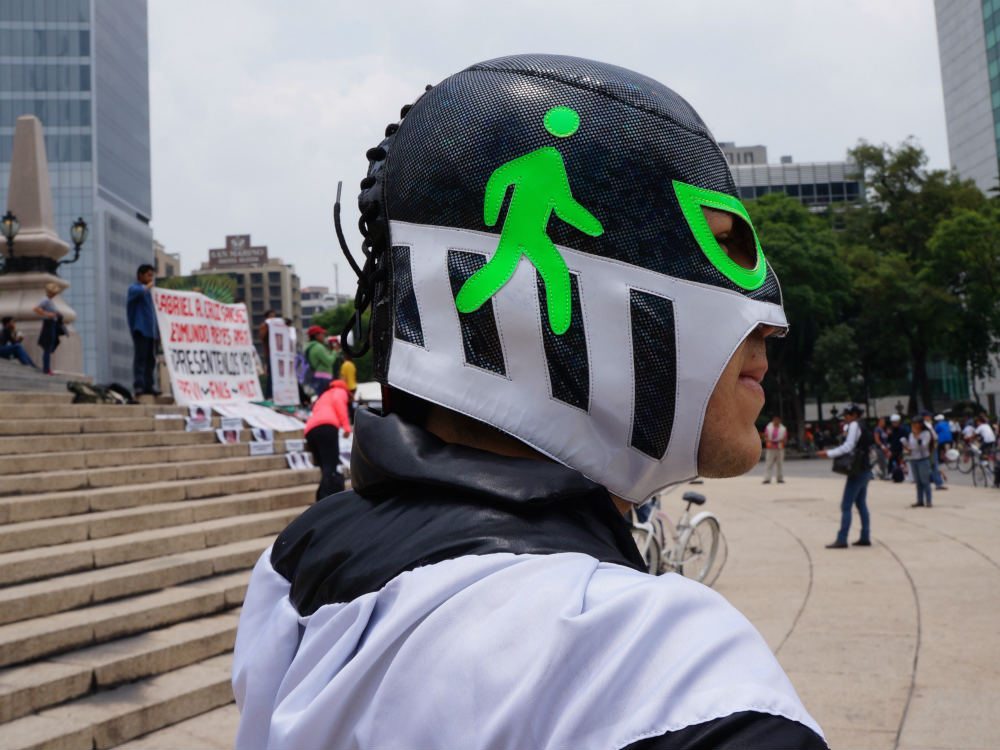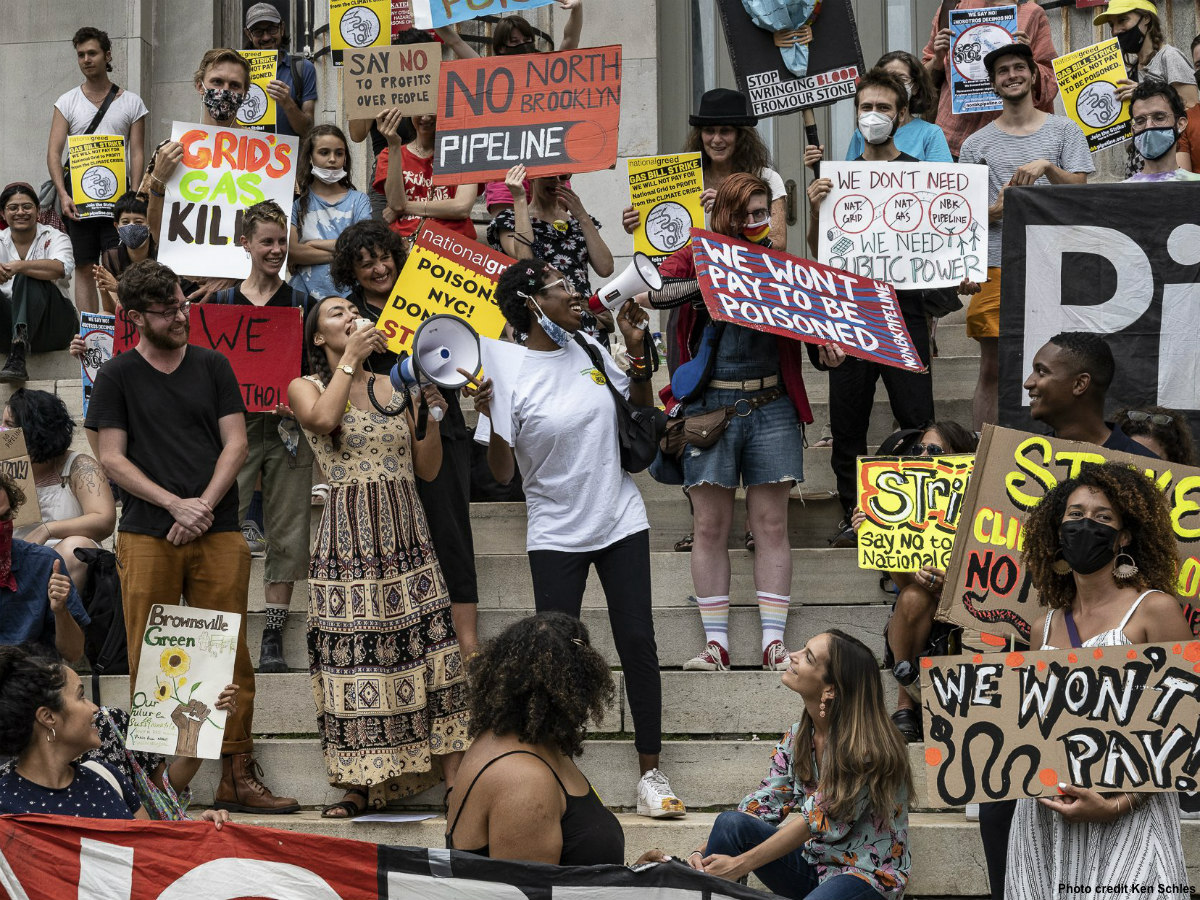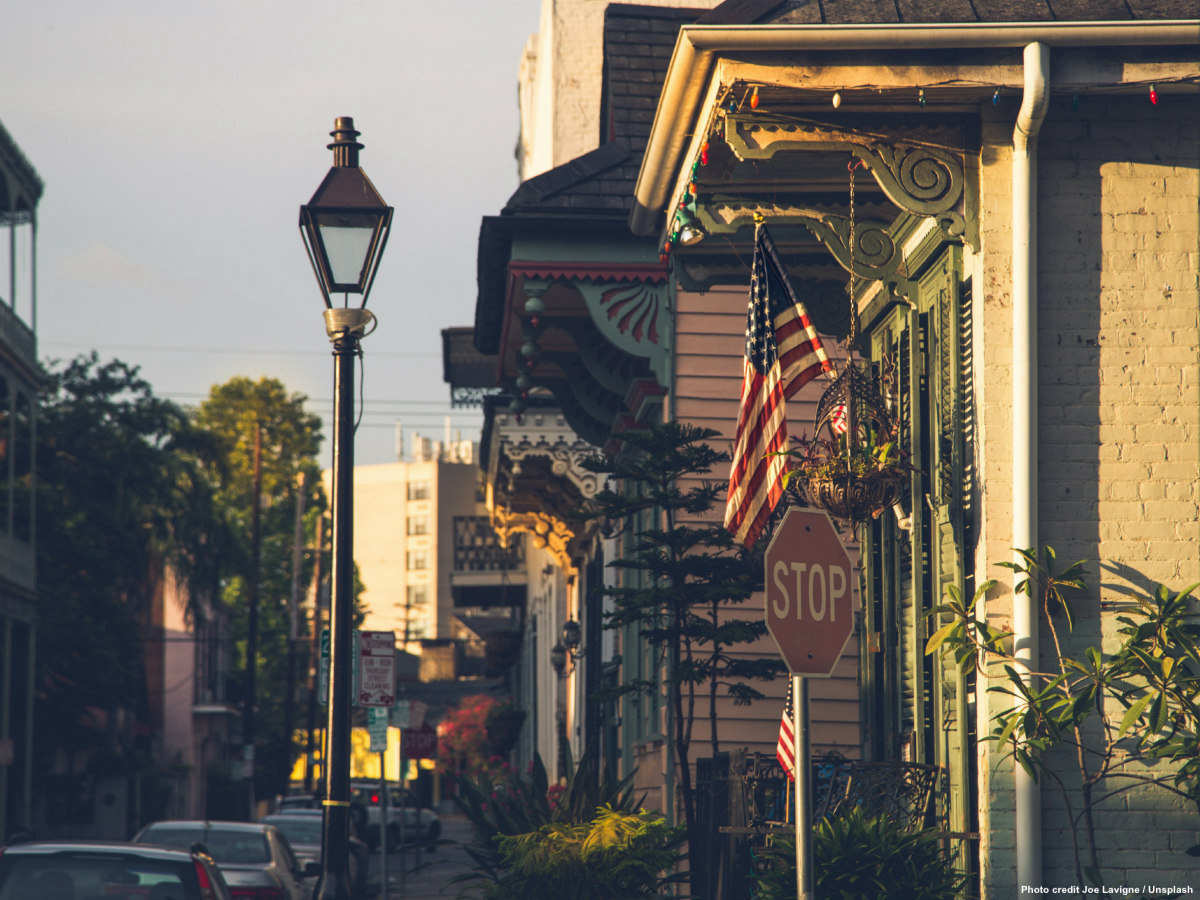The streets of Mexico City haven’t seen their superhero in 3 years. Jorge Cáñez, a political scientist, called himself Peatónito. He used to wear a Mexican wrestler mask, a cape and proclaim himself to be a superhero for pedestrian safety in Mexico City. Since wrestling is a big thing in his country, he thought creativity and humour could be an effective weapon to fight for a walkable city and heal driving addiction.
‘After I took part in a symbolic action for pedestrian safety in Mexico City, I had the idea of creating a superhero as part of the pedestrian safety movement that was starting to flourish in the city’, explains Jorge. Backed by other activists he was filmed as Peatónito and they shared the campaign in social media. ‘This hero was such a powerful communication tool that the media started to call us’, admits Jorge. He was inspired by Peatón Man in Quito (Ecuador) and Mockus in Bogotá (Colombia).
But this idea was not only limited to a communication campaign. Peatónito was a real hero. He went to the streets to change bad drivers’ behaviour. He used to move motorbikes parked on pedestrian walkways; stopped the traffic at crossing roads and pushed cars.
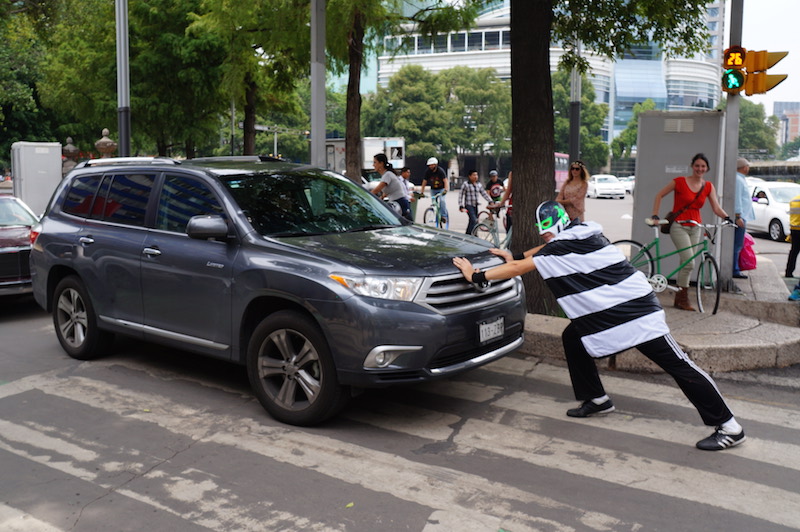
‘You need the courage to walk over cars, which were parked illegally in pedestrian areas, in a city like Mexico with high criminality rate’; he laughs.
Actually this ‘car walking’ action in particular dates back to the eighties, when in the peak of automobile friendly policies in cities, the artist activist German Michael Hartman became the famous carwalker. He was walking with his girlfriend in Munich and had to continuously zigzagged between cars parked on the side-walks. So he decided to walk over the cars.
In Mexico bad driver behaviour is a malaise. Feverish drivers occupied crossing walks or parked on pedestrian roads to the detriment of citizens who choose to walk.
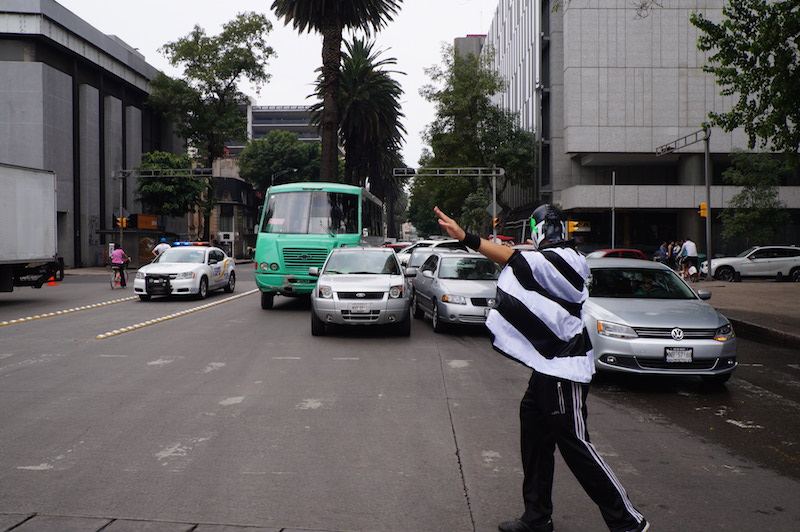
Urban dwellers are always in a rush. Time is a key variable in the urban mobility equation. As cities get bigger, cars have been prioritised over walking to the point that driving in cities has become an addiction to get that extra time.
But addiction affects everyone, not just the addict. In many cities around the world the main reason of mortality in youngsters is car accidents. In Mexico 4 persons die daily in car accidents, 2 are quite often pedestrians.
‘In fact, there are so many social implications attached to the killing of a young pedestrian, as a whole family would depend on this person for a living in Mexico’, explains Jorge.
The WHO proclaimed in 2010 the Decade of Action for Road Safety until 2020, officially backed by the UN General Assembly. The 2030 Agenda for Sustainable Development recognizes that road safety is a prerequisite to ensuring healthy lives, promoting well-being and making cities inclusive, safe, resilient and sustainable. As this decade is coming to an end, there is still so much to do.
‘We have built cities where cars have got so much freedom and little accountability. The biggest problem is the city infrastructure, and so less road safety awareness among drivers’, explains Jorge. Basically it means that cities need to redesign roads to restrict motor traffic – and that’s where things get difficult.
Could the empowerment of walking heal driving addiction and become a serious alternative to driving? If walking is supposed to exercise our legs and brain and be a good mood enhancer, why then are people not walking more in cities? We drag ourselves from our desk to the gym, but we can’t walk to places.
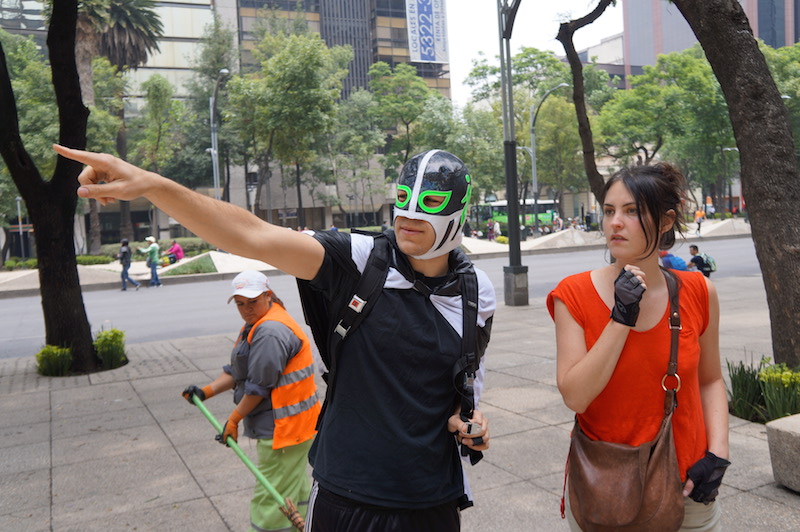
‘The walking conditions in some streets just don’t help’, explains Jorge. Right now many cities are so focused on improving cycling infrastructure that pedestrians are almost forgotten. And they feel abandoned.
Peatónito has left Mexico City but has not given up on his commitment to walking and pedestrian safety. His legacy is still inspiring many activists groups in Mexico and more superheroes were born in other Latin American cities.
Peatónito had a point. Creative activism can bring a lot of attention from the public and the city authorities to empower walking. To make the city more civilised and habitable, we’ll have to curb our devotion to cars. Citizens don’t need a car; they just need more time.
